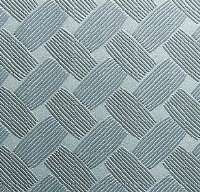- 0531-87887788

來源:http://www.kangyanghua.com/ 發(fā)布時間:2020-09-10
鋁板是怎么進行氧化上色的呢?都有什么方法可以讓金屬鋁氧化上色?正常情況下氧化鋁板上色大的方面分為兩種情況:人工著色和自然著色。人工著色又分為化學著色和電解著色。自然著色又分為合金發(fā)色和溶液發(fā)色。鋁板生產(chǎn)廠家今天給大家一一分析講解一下:
How is aluminum plate oxidized and colored? Is there any way to make aluminum oxide coloring? Under normal circumstances, there are two kinds of color on aluminum oxide board: artificial coloring and natural coloring. Artificial coloring can be divided into chemical coloring and electrolytic coloring. Natural coloring can be divided into Alloy Coloring and solution coloring. The aluminum plate manufacturer will give you an analysis and explanation one by one
第 一種情況是化學著色:將經(jīng)過氧化處理的鋁材浸入有機或無機染料溶液中,染料滲入氧化膜的孔隙,發(fā)生化學或物理作用而著色。化學著色設備簡單,成本低,顏色種類多,但耐光、耐蝕性差,只適于室內(nèi)裝飾。
The first case is chemical coloring: the oxidized aluminum material is immersed in organic or inorganic dye solution, and the dye penetrates into the pores of the oxide film, causing chemical or physical reaction and coloring. Chemical coloring equipment is simple, low cost, and many kinds of colors, but it has poor light resistance and corrosion resistance, so it is only suitable for interior decoration.
第二種情況是電解著色:經(jīng)過氧化處理的鋁材,在單一金屬鹽或多種金屬鹽水溶液中,進行二次電解,在電場作用下,金屬陽離子滲入氧化膜的孔隙中,并沉積在孔底,從而使氧化膜產(chǎn)生青銅色系、棕色系、灰色系以及紅、青、藍等色調(diào)。

The second case is electrolytic coloring: after the oxidation of aluminum, in a single metal salt or a variety of metal salt solution, the secondary electrolysis, under the effect of electric field, metal cations penetrate into the pores of the oxide film, and deposit at the bottom of the hole, so that the oxide film produces bronze, brown, gray, red, green, blue and other colors.
第三種情況是自然著色:鋁材在陽極氧化的同時進行著色的方法。有合金發(fā)色法和溶液發(fā)色法。合金發(fā)色法是控制鋁合金成分而獲得不同的色調(diào);溶液發(fā)色法也稱為電解發(fā)色法,是控制電解液的成分和電解條件來控制色調(diào)的。實際生產(chǎn)中,自然著色一般都采用有機酸作為電解液,并加入少量硫酸以調(diào)節(jié)PH。
The third case is natural coloring: Anodizing and coloring of aluminum. There are alloy coloring method and solution coloring method. Alloy coloring method is to control the composition of aluminum alloy to obtain different hues; solution coloring method, also known as electrolytic coloring method, is to control the composition of electrolyte and electrolytic conditions to control the hue. In practical production, organic acid is usually used as electrolyte for natural coloring, and a small amount of sulfuric acid is added to adjust pH.
鋁的氧化著色,采用人工方法使鋁及其合金制品表面生成一層氧化膜(Al2O3)并施以不同的顏色,以提高鋁材的耐磨性,延長使用壽命并增加色澤美觀。氧化著色的基本工序為鋁材表面處理、氧化、著色和隨后的水合封孔、有機涂層等處理過程。
In order to prolong the service life of the aluminum alloy products, the aluminum oxide layer with different color is applied. The basic process of oxidation coloring is aluminum surface treatment, oxidation, coloring and subsequent hydration sealing, organic coating and other treatment processes.
鋁的氧化鋁的表面在自然條件下就保持一層10~100埃的氧化膜,人工氧化膜則是根據(jù)不同的目的使膜厚控制在0.5~250微米。人工膜生成的方法有化學氧化法和電化學氧化(即陽極氧化)法。
Under natural conditions, the surface of aluminum oxide keeps a layer of 10-100 angstrom oxide film, while the artificial oxide film is controlled within 0.5-250 μ m according to different purposes. There are chemical oxidation and electrochemical oxidation (i.e. anodic oxidation) methods for the formation of artificial membranes.
化學氧化將表面凈化處理后的鋁或鋁合金在含有氧化劑和活性劑的氧化溶液中進行化學反應,形成一層氧化膜。活性劑的作用是使氧化膜在生成過程中部分溶解,產(chǎn)生孔隙,使氧化繼續(xù)進行,氧化膜得以增厚。氧化溶液的種類很多,常以鉻酸鹽為氧化劑,碳酸鹽為活性劑。
Chemical oxidation is the chemical reaction of surface purified aluminum or aluminum alloy in the oxidation solution containing oxidant and activator to form an oxide film. The role of the activator is to make the oxide film partially dissolved in the formation process, resulting in pores, so that the oxidation continues and the oxide film can be thickened. There are many kinds of oxidation solutions, usually using chromate as oxidant and carbonate as active agent.
陽極氧化通常在硫酸、草酸或鉻酸等電解質(zhì)溶液中進行。以鋁作陽極,鉛等金屬作陰極,在直流電場的作用下,陰離子(OH)向陽極移動,并在陽極產(chǎn)生新生氧與作為陽極的鋁作用,生成氧化膜。在電解液中酸可局部溶解氧化膜,產(chǎn)生孔隙,使氧化反應得以向縱深發(fā)展。此法使鋁的表面形成多孔結構,可進行各種著色處理,并可作為噴漆底層。
Anodizing is usually carried out in electrolyte solutions such as sulfuric acid, oxalic acid or chromic acid. Under the action of direct current electric field, the anion (OH) moves to the anode, and produces new oxygen on the anode and reacts with aluminum as anode to form oxide film. In the electrolyte, the acid can partially dissolve the oxide film and produce pores, which makes the oxidation reaction develop in depth. This method can form porous structure on the surface of aluminum, which can be used for various coloring treatments and can be used as paint primer.